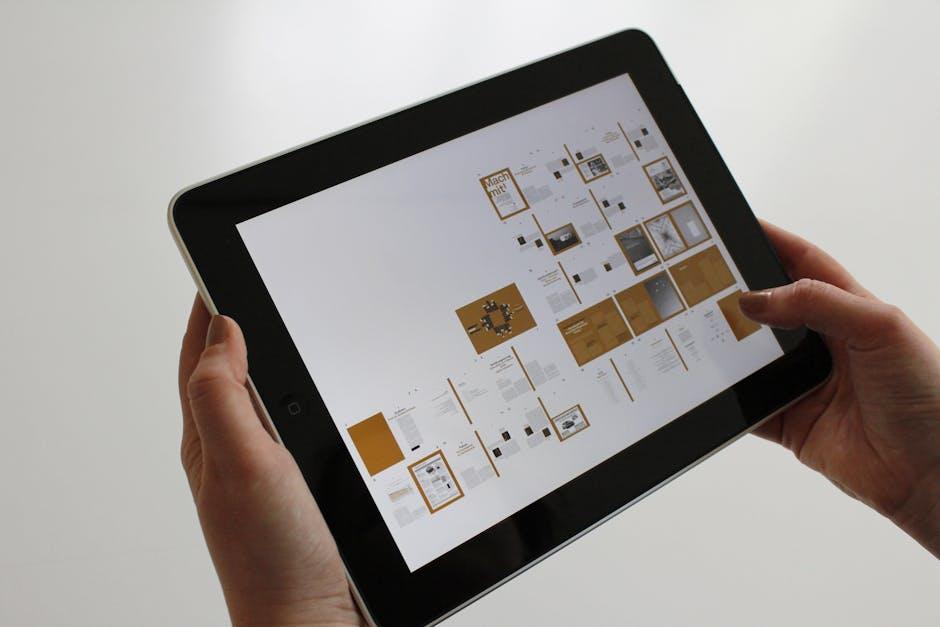In an increasingly fast-paced world where stress and distraction have become constants in our lives, meditation apps like Headspace and Calm have emerged as virtual sanctuaries, guiding users toward mindfulness and tranquility. Both platforms have garnered millions of followers, each touting unique features, engaging designs, and a wealth of content to cater to the diverse needs of thier users. as we step into 2025, the landscape of meditation is evolving, raising the question: which app truly reigns supreme? In this article, we will explore the strengths and weaknesses of Headspace and Calm, examining their offerings, user experiences, and innovations to determine which of these mindfulness titans stands out in the digital age. Join us on this comparative journey as we dive deep into the realms of mindfulness, serenity, and personal growth.
Exploring User Experience and Interface Design in Meditation Apps
In 2025, the user experience and interface design of meditation apps play a crucial role in helping users engage deeply with their practices. both Headspace and Calm have made significant strides in enhancing their platforms to encourage daily meditation. Headspace adopts a vibrant design with playful animations and straightforward navigation, making it appealing to newcomers. The color palette promotes a sense of tranquility while ensuring the app remains engaging. Users appreciate features such as:
- Guided Meditations: Clear categorization based on time and intention.
- Progress Tracking: Visual feedback on personal achievements.
- Community Engagement: Options for sharing experiences with peers.
Conversely, Calm emphasizes a more serene aesthetic, with soothing gradients and natural imagery that invites users into a stress-free environment. The interface is designed to evoke a feeling of peace right from the start.Calm’s unique offerings include:
- Sleep Stories: Narrations that help users drift off.
- Soundscapes: Nature sounds that enhance relaxation.
- Customizable Session Length: Flexibility to suit user preferences.
| Feature | Headspace | Calm |
|---|---|---|
| User Interface | Vibrant and playful | Serene and calming |
| Guided Meditations | Yes, with themes | Yes, with various styles |
| Sleepless Options | No | Yes, with sleep stories |

Comparative Analysis of Meditation Techniques and Content Variety
When comparing meditation apps like Headspace and Calm,it’s essential to explore the variety of techniques each offers to users. Headspace places a strong emphasis on guided meditation, providing structured courses that cater to diffrent experience levels and goals, such as stress reduction or sleep improvement. Users can expect to encounter a range of techniques,including:
- Mindfulness Practices: Daily sessions aimed at cultivating awareness.
- Breathwork: Exercises focused on regulating breath to enhance relaxation.
- Visualizations: Guided imagery aimed at fostering relaxation and happiness.
Calm, on the other hand, promotes a broader content spectrum, blending meditation with soothing soundscapes and ambient music.This allows users to choose from a rich selection ideal for both meditation and relaxation. Key offerings include:
- Bedtime Stories: narratives designed to ease users into a restful sleep.
- Music Tracks: Curated playlists for creating the perfect environment for focus or relaxation.
- Daily Calm: Fast sessions that provide insights and meditative lessons.

Examining Subscription Models and Value for Money
When comparing Headspace and Calm, it’s essential to delve into their subscription models and assess the overall value for money they provide to users. Both apps offer a free trial period, allowing users to explore their features before making a financial commitment. The following are the key subscription plans:
| App | Monthly Subscription | Annual Subscription | Special Offer |
|---|---|---|---|
| Headspace | $12.99 | $69.99 (save 46%) | 30-day free trial |
| Calm | $14.99 | $69.99 (save 53%) | 7-day free trial |
Examining the pricing structures reveals that while Headspace and Calm offer similar annual fees, their monthly costs differ, with Calm being slightly more expensive. In terms of value for money, users might want to consider the breadth of features included in each subscription. Headspace is lauded for its structured meditation courses and user-amiable interface, while calm provides an extensive library of sleep stories, music tracks, and masterclasses from renowned experts. This diversification means that depending on individual needs—be it deepening meditation practices or enhancing sleep quality—one app may align better than the other, compelling potential subscribers to weigh their options thoughtfully.

User Reviews and Community Engagement: Who Leads the Conversation?
in 2025, the conversation surrounding meditation apps like Headspace and Calm continues to thrive within the user community. Reviews flood social media platforms and dedicated forums, where users share their personal experiences and preferences. The community engagement on these platforms often highlights which features resonate most with individuals, leading to emerging trends in user preferences. Some common themes in user feedback include:
- User Interface: A clean and intuitive interface is frequently praised.
- Meditation Variety: The availability of diverse meditation styles and lengths appeals to many users.
- guided Sessions: Users frequently enough compare the effectiveness of guides versus self-led sessions.
Moreover,community-driven discussions also influence the apps’ progress and updates. Both Headspace and Calm have been known to respond to user feedback, resulting in improved features and the addition of popular requests.A quick glance at user ratings reveals how community sentiment can sway the popularity of an app:
| App | User Rating | Key Features |
|---|---|---|
| Headspace | 4.8/5 | Colorful animations, bite-sized sessions |
| Calm | 4.7/5 | Sleep stories, music tracks, nature sounds |
To Wrap It Up
As we draw the curtains on our exploration of Headspace vs. Calm, it’s clear that both meditation apps bring their unique flavors to the table. With the ever-evolving landscape of wellness technology, the choice between these two will ultimately depend on individual preferences, goals, and meditation styles.
Whether you gravitate towards the guided journeys and playful animations of Headspace or find solace in the serene sounds and customizable features of Calm, both platforms offer valuable tools for mindfulness and relaxation. As we move into 2025, the best decision is one that resonates with your personal journey and aligns with your aspirations for mental well-being.
In a world that constantly demands our attention, making time for self-care is essential. So, whether you choose to meditate with Headspace, unwind with Calm, or perhaps even alternate between the two, the most vital thing is that you find a practice that nurtures your mind and soul. After all, the path to peace is personal, and every step taken towards mindfulness is a victory worth celebrating.



